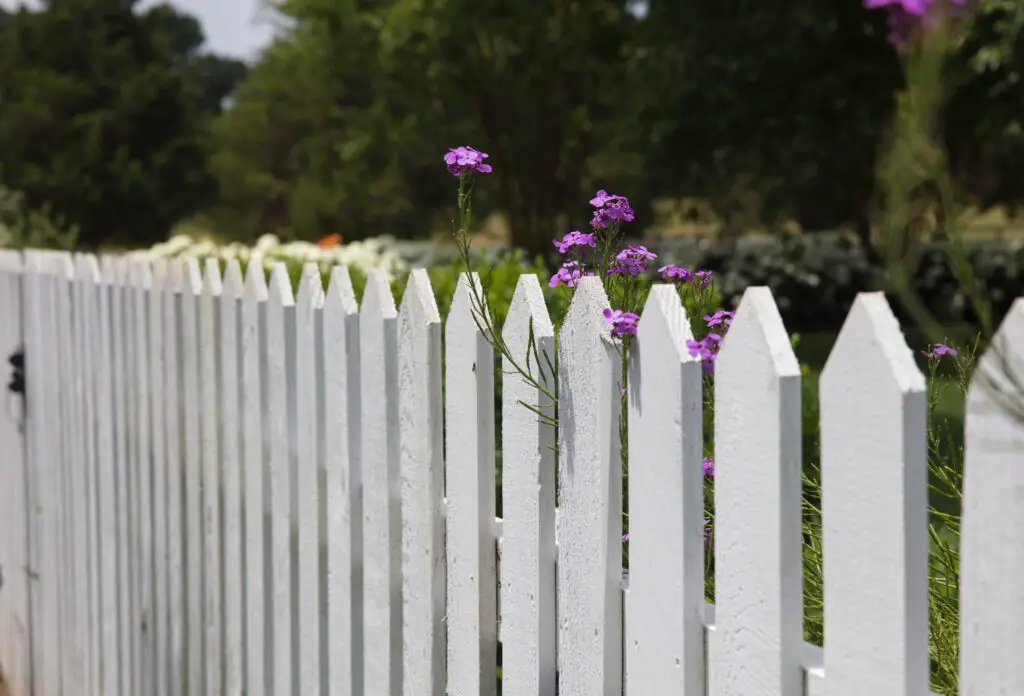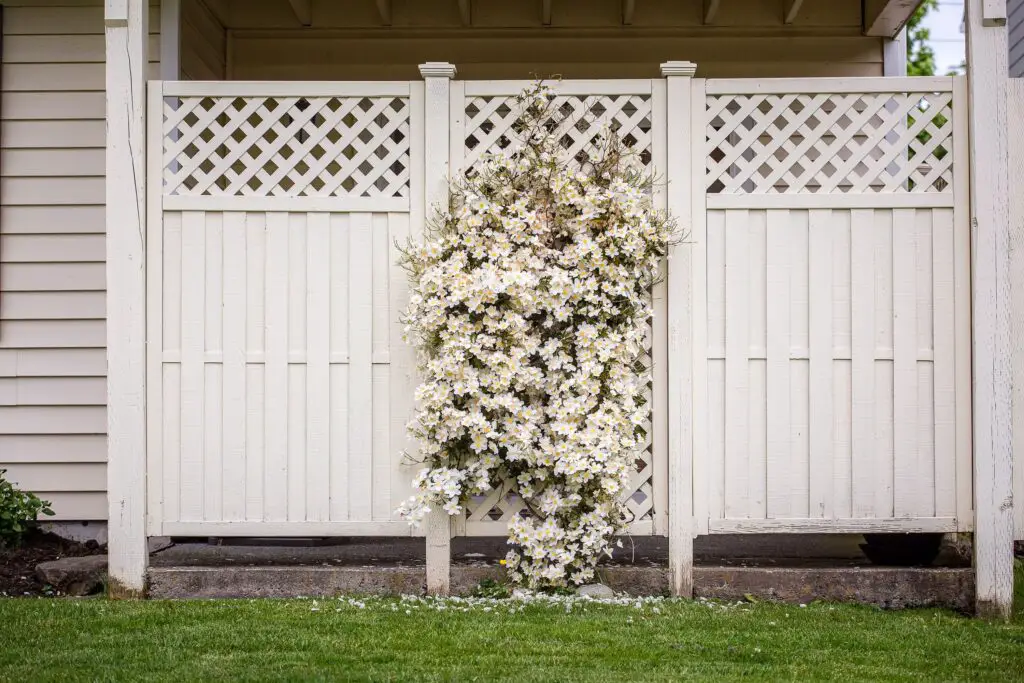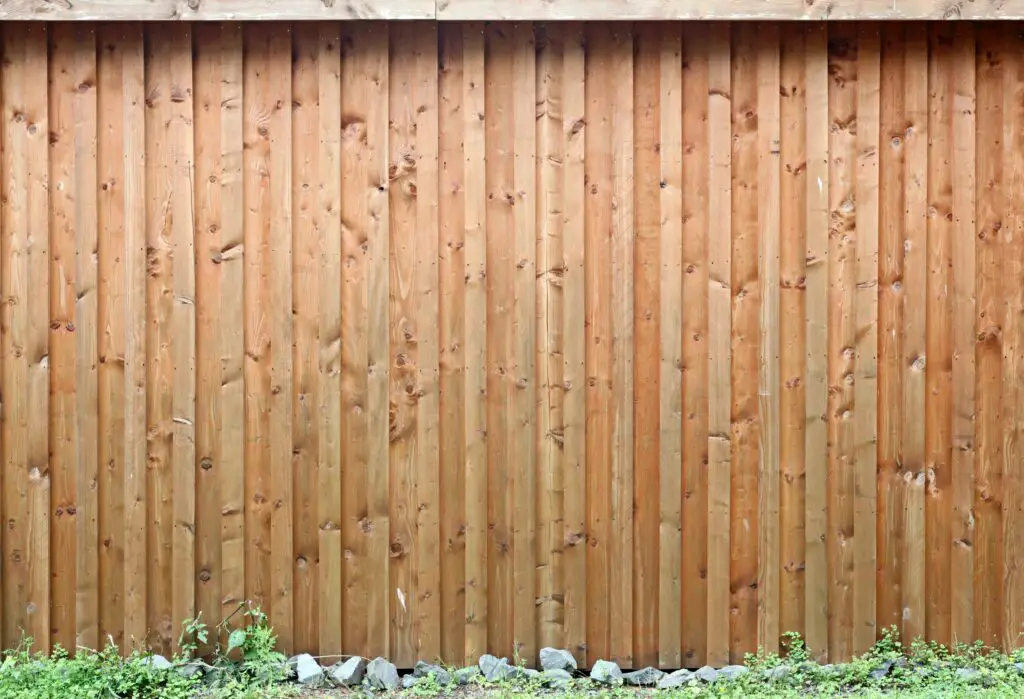As a homeowner, it’s not uncommon to have disagreements with your neighbours over shared property, including fences. One of the most common fence dispute is over painting a neighbours fence – whether you can paint your neighbour’s fence or vice versa.
Now that spring is just around the corner (hopefully), garden and fence disputes will be on the rise, as most people want to spruce up their garden ready for the warm weather and summer BBQs.
In this article, I will provide information on how to navigate fence disputes, your rights and some helpful FAQs about painting a shared fence.
Property rights – maintaining fences
In the UK, property owners have the right to maintain and improve their property as they see fit, as long as they do not cause harm to neighbouring properties. However, when it comes to shared boundaries, such as fences, it’s important to be aware of the property rights of both parties.
To know your position and rights, you first need to establish who owns the fence. If you own the fence, then you are free to maintain and stain your fence as you wish. If you don’t own the fence and want to do some maintenance to it, you will need to get your neighbours permission.
If you want to replace the fence that you own, it is your choice what to replace it with, but it would be polite to talk to your neighbours beforehand to ensure there are no future issues.
You should also give them notice when the fence will be removed and replaced, as they may have pets or children that could escape.

Painting fencing and the law
If the fence is entirely on your property, you have the right to paint both sides. If the fence is owned by your neighbour you shouldn’t do anything without your neighbours permission. If you own the fence, you can paint it without informing your neighbour.
Under UK law, who owns the fence will determine what you can or can’t do with the fence. So how do you know which fence is yours? The fence is usually owned by one property and this is established by looking at the title deeds.
The boundary will be marked with a ‘T’ and that will indicate who owns the fence. If you can’t locate the property paperwork, then you can buy a copy of the title and plan from the Land Registry, for a small fee.
Painting a neighbours fence without your neighbour’s permission can be considered criminal damage under the Criminal Damage Act 1971.
If your neighbour does threaten to sue you for damage to the fence, they would have to show actual damage and it could be argued that paint hasn’t caused damage.
The costs of getting legal advice and pursing a case of this nature may outweigh the cost of the fence. It really depends on the individual circumstances of the case, but it is very rare for these types of disputes to go to court.
You can get quotes from Bark.com from solicitors and it’s free and quick. I have personally used Bark.com and I highly rate it as it saves a lot of time.
Here’s a Quick Pro Tip!
Engaging in a conflict with your neighbour can be quite unpleasant, and such situations often seem to extend indefinitely.
However, discovering your neighbour in the act of painting your fence or committing any other unlawful act can serve as irrefutable evidence to secure victory in your dispute.
To effectively address such circumstances, it is advisable to equip yourself with a reliable security system like the Ring Video Doorbell or Outdoor Security Cameras, both readily available on Amazon. This proactive measure proves to be a prudent choice in this scenario since visual evidence possesses the power to convey volumes of information beyond mere words.
Top pick

Eufy Security
The Eufy Security system is perfect for catching nuisance neighbours in the act.
How to resolve disputes regarding painting a shared fence with your neighbour
Good communication is key to maintaining positive neighbourly relationships and to reduce the chance of things turning nasty.
If you own the fence, then you don’t need permission from your neighbour to paint it. If you want to paint a neighbours fence, it’s important to approach your neighbour to discuss this, before you start picking paint colours.
Explain your reasons for wanting to paint the fence, and be open to their concerns or suggestions. By working together, you may be able to reach a mutually beneficial agreement that benefits both parties.
If a dispute arises over fence painting or any other shared property issue, it’s important to approach the situation calmly and rationally.
If you are unable to resolve the dispute on your own, consider seeking advice from a third party, such as a mediation service or a legal professional.
These services can provide impartial guidance and help you reach a resolution that is fair to both parties. However, mediation and seeking legal advice can be costly, so you need to consider the matter carefully before incurring costs.
If the issue is severe and you intend on taking matters further, then I would recommend getting a home security camera that can record your nuisance neighbour in the act.
I personally have the Eufy home security system and I highly rate it but there are lots of different options on Amazon, at different price points.

You may also like 📖
FAQs about neighbours painting fences
If you are a homeowner, you may have concerns about your neighbours painting your fence. Perhaps you are worried about damage to your property or the impact on the appearance of your fence.
In this section of the article, I will address these concerns and provide answers to commonly asked questions regarding painting a neighbours fence.
You can’t paint your neighbours fence without their permission in the UK. Homeowners have the right to control their property, including the appearance of their fence. Any alteration to the fence, including painting it, must be approved by your neighbour. If you paint your neighbours fence without their permission, this could be considered as criminal damage.
If your neighbour has painted your fence without permission, you have several options. The first step is to try to resolve the issue with your neighbour directly. Politely explain that you did not give permission for them to paint your fence and ask that they remove/strip the paint. If your neighbour is uncooperative or refuses to remove the paint, you may need to consider legal action. It’s important to document any damage and keep a copy of all communication with your neighbour regarding the paint job.
It really comes down to how much you value your fence and if you think it is worth taking the dispute further.
If you share a fence with your neighbour, they may want to paint it to match their house or make other aesthetic changes. In this case, it’s important to work together to come to an agreement. Ideally, you and your neighbour can work out a compromise that benefits both parties. For example, you may agree to split the cost of the paint or to choose a colour that works for both houses. Be sure to put any agreements in writing to avoid any confusion or disputes in the future.
You can only paint your side of the fence, without involving your neighbour, if you own the fence. If you want to paint your side of your neighbours fence, you can paint it if they give you their permission. The permission can be verbal but I would always recommend getting something in writing, just in case there is any disagreement after you have painted the fence.
If your neighbour’s paint job damages your fence, you may be able to hold them responsible for the cost of repairs. It’s important to document any damage and communicate with your neighbour as soon as possible. If the damage is severe, you may need to contact a solicitor or a mediator to help you resolve the issue. However, in most cases, you should be able to work out a solution directly with your neighbour. For example, your neighbour may be willing to pay for the cost of repairs or to fix the damage themselves. Be sure to keep all communication with your neighbour in writing to avoid any confusion or misunderstandings.
If you want to prevent your neighbour from painting your fence, the best approach is to communicate with them directly. Let them know that you do not want them to paint your fence and explain your reasons. If you have concerns about the quality of their work or the colour they have chosen, be sure to express these as well. It’s important to be polite and respectful in your communication, as this can help avoid any conflict.
Another option is to install a physical barrier on your side of the fence to prevent your neighbour from accessing it. For example, you could install a trellis or bamboo screening to create a visual barrier. However, keep in mind that this may not be the most attractive solution and it could potentially escalate the conflict between you and your neighbour. If your neighbour came onto your land to paint your fence, this would also be trespass.
Painting a fence without the owner’s permission can be considered criminal damage in the UK. This is because it involves altering the property without the owner’s consent, which can be considered vandalism or destruction of someone else’s property.
If it is your fence, you can paint both sides of the fence and maintain it. If you don’t own the fence, then it depends what you agree with your neighbour. They may agree that you can paint your side, if you pay to paint the other side at the same time. Have a conversation with your neighbour and hopefully you can come to a mutual agreement.
If your neighbours have painted their side of your fence and the paint has come through to your side, this could be classified as criminal damage. It will be more frustrating if you have a stained fence and now have specks of paint all over it. Firstly, talk to your neighbour and see if they would consider putting things right. In this case, they could sand the paint off and then pay for the fence to be re-stained. If they won’t put it right you could try mediation or seek legal advice but you will need to weigh up the costs.
There is no specific law on which side of the fence you should give to your neighbour, but there is an unwritten rule that you give them the good (smooth) side.
Majority of people follow this rule and it can actually help you determine who owns what fence, by looking down the line of properties. Generally, the owner of the fence will have the side of the fence with the panels. However, you can’t force your neighbour to give you a particular side of the fence when it is being fitted.

Conclusion
In conclusion, it is important to remember that your neighbour does not have the right to paint your fence without your permission in the UK.
Doing so could be considered criminal damage and may lead to legal consequences. It is always best to communicate with your neighbour and come to a mutual agreement before any work is done on shared property.
By working together and respecting each other’s rights as property owners, you can avoid any unnecessary disputes and maintain a positive relationship with your neighbours.





Leave a Reply